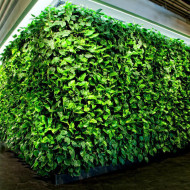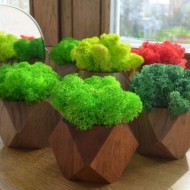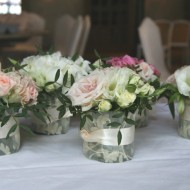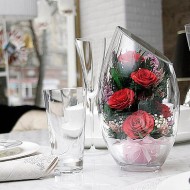What are stabilized flowers and how to make them yourself
Content
What are stabilized flowers
They should not be confused with artificial or dried flowers. After going through a specific improvement, the flowers remain alive, retaining their freshness and color range for many years.
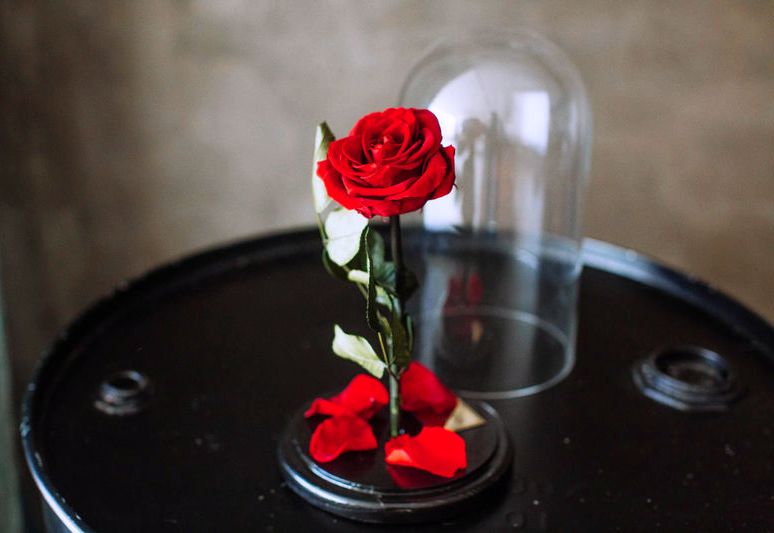
The stabilization technique involves replacing the plant sap that feeds the stems and buds with a special composition based on glycerin. Unlike dried flowers, stabilized bouquets do not crumble and look very natural, retaining flexibility and natural colors. These flowers decorate the room as well as freshly cut plants.
Another variant of stabilization is the spraying of a special substance on top of a living plant, which blocks wilting and decay. Such an embalmed flower loses its flexibility, hardens, retaining its original appearance and shape.
Benefits of using
Although such crafts are not yet very popular in our country, stabilization technology is very popular in Europe. It is used in the design of banquet halls and shop windows, plants are displayed for all to see in business centers and spas, and are used in landscape designs and apartment interiors.
The benefits of stabilized plants:
- Long term. Applying the technique to a whole bouquet, it is possible to extend its life by six months, to a single flower - up to 3-5 years, to a shrub - up to 7 years, trees - up to 10 years, mosses - up to 40 years.
- Preservation of the natural scenic appearance inherent in a living plant.
- Undemanding care, off-season.
- Harmlessness - the technology does not pose any danger to the health of owners and pets.
- Versatility in application. It is possible to revive with stabilized plants not only a dwelling, but also other rooms where there are many people.

Industrial stabilization methods
Making such plants is not an easy process. It includes:
- growing crops with a dense stem, massive leaves and buds;
- cutting of suitable specimens, holding for a couple of hours;
- placing the plant in a container with glycerin;
- treatment of the stem and foliage with a stiffening compound;
- processing the petals in a similar way, only an aromatic fragrance is added to the composition.
As a result, the flower absorbs glycerin instead of juice, which prevents it from fading, the surface becomes harder without losing its elasticity. An industrially made flower can stand without spoiling for 5 to 10 years (the exact terms depend on the culture used and compliance with storage conditions).
Companies engaged in such a business have their own secrets regarding the solution used. The methods differ in the percentage of water and glycerin, the addition of certain chemical components to the composition, etc. The formula used may vary for different types of flower. For example, in some firms, flowers are embalmed at the growth stage, watering not with water, but with a special composition. They are grown in alcohol mixtures.
Video "Stabilized roses with your own hands"
This video presents a step-by-step master class for processing flowers at home.
How to make stabilized flowers with your own hands
Alas, the shelf life of crafts will be much shorter than that of professionally made compositions. But a stabilized bouquet will be able to please within six months or a year.
Most often, the queens of gardens are used for the experiment - roses. They use different methods to stabilize them at home. The shelf life of finished products depends on the storage conditions - after all, roses are very fragile flowers.
Preparing inventory
First of all, you need to pick up the flower itself - it should be a strong specimen with a lush bud, dense stem and massive leaves. For processing, you will need special inventory, including:
- sharp pruning shears (scissors can be used) for periodically shortening the stem;
- a pair of containers for storing a flower;
- a deep bowl or glass for a special solution;
- a long wooden spoon or stirring sticks.
You need to cut off ripe and blossoming buds with a stem length slightly longer than desired. Then they are dried a little to get rid of excess moisture.
Method 1: Water and glycerin (1: 1)
The stabilizing composition is prepared by mixing equally water and glycerin in a glass. The next steps are as follows:
- At the tip of the stem, make an oblique cut (0.5 cm), put the flower in the solution.
- The structure is removed to a dark, cool room.
- Wait 2-3 weeks, during which the flowers are gradually saturated with glycerin solution. The composition needs to be cooked and added from time to time, each time cutting the stem again.
It is important to trim the ends of the stem daily for the first week.
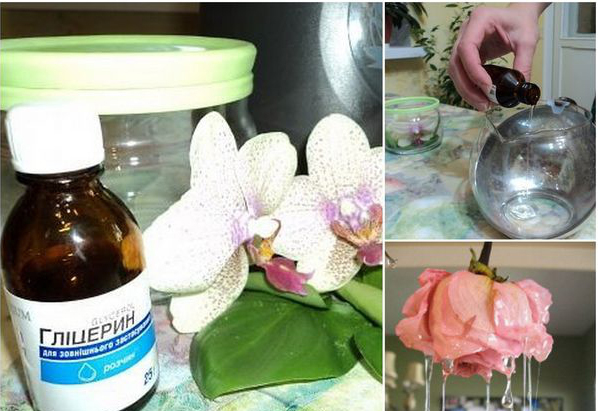
Method 2: Water and glycerin (1: 2)
This option assumes the use of two measures of glycerin and one measure of water. Water is necessarily heated to 70 ° C, receiving a warm solution. Before each addition to the container, a new portion is waited until the warm composition has cooled to room temperature.
With this technique, the flower is not placed in the solution with the stem, but is dipped completely (you need a bowl deeper). Exposure will also take 2-3 weeks. Upon completion, the flowers are dried. Leaves, whole bouquets, etc., are preserved in the same way, if only a suitable plant is completely immersed in the solution.
Method 3: Paraffin
For the technique, you will need wax (candle or cosmetic) and tweezers. The technique is as follows:
- the wax is heated in a bowl in a water bath;
- holding with tweezers, the rose is slowly dipped entirely in wax, slightly heated and immediately removed;
- you need to dunk 3-4 times, making sure that the paraffin is completely spread over the surface;
- the flower is hung on a string in a dark, cool room (or placed vertically in a jar), and wait until the excess wax drains.
It is impossible to keep the flower in paraffin for a long time, since the petals are quickly deformed.
Do-it-yourself waxed flowers can be displayed, from time to time easily cleaned of dust, used to decorate Christmas wreaths or the same bouquets of dried flowers.
Another use of wax involves paraffin injections.To do this, melted wax is injected into the flower through the stem using a syringe without a needle.
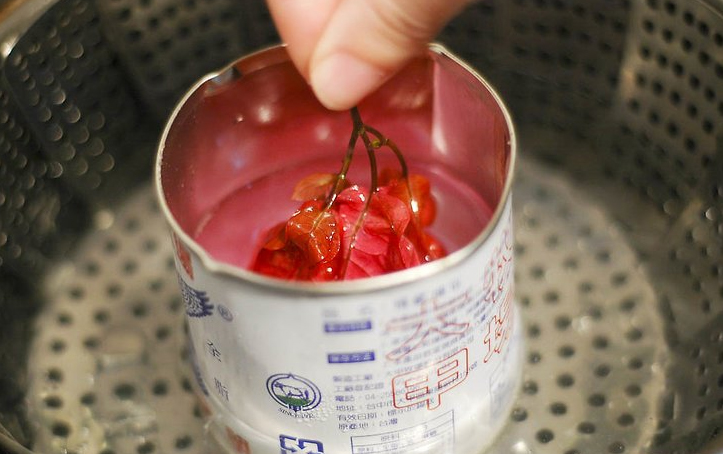
Method 4: "Flowers in a jar"
Instead of placing sublimated flowers in an ordinary home vase, you can pick up a permanent transparent container for them - a figured jar or flask, having made some kind of composition. It is done according to the following scheme:
- The container is filled with glycerin and water in a 2: 1 ratio. You can replace it with a solution of gelatin with sugar in a 1: 1 ratio.
- The flower is placed inside as a whole, so that it seems to be afloat.
- The container is tightly corked, the lid is decorated (with ribbons, braid, painted with paints, varnished, etc.).
Instead of a whole flower, you can place several lush buds in a container or add picturesque leaves to the composition, lay out the bottom with moss, shells, beads and other decorations.

Stabilized plant care
Freeze-dried flowers should not be placed in water, preferably in a pot of dry sand. When water gets into such plants, they lose their decorative effect, therefore watering is not required - it is enough to periodically carefully clean them of dust with a brush or a stream of air from a hair dryer.
For the same reason, you should not display ready-made crafts in rooms with high humidity (kitchen, bathroom). When wet cleaning, make sure that no moisture gets on open flowers. If it does get in, blot these places with a napkin or dry cloth. Darkened areas are cleaned with a damp sponge.
Flowers are kept away from direct sunlight - glycerin melts under the influence of ultraviolet radiation, as a result, the colors either fade or are completely lost.
Ideal conditions for keeping crafts:
- temperature: 5–35 ° С;
- humidity: 60–80%.
Applying durable flowers, trees, grasses and mosses
In addition to home bouquets, stabilized plants are used in all kinds of floristic compositions. They make up panels and paintings, create sculptures, decorate wreaths. Long-lasting flowers are an excellent decoration for weddings (bouquets, hairstyles, a festive table, cars), as they are capable of not losing their original appearance in hot and cold weather.
You can stabilize small trees, for example, palms, lemons, limes and others. They are used to decorate spacious rooms - hotels, offices, restaurants and salons.
Even moss (mostly Scandinavian) went into action. With the help of its durable forms, rooms are landscaped and decorated. Fragile moss is not suitable for flooring, but in various vertical and horizontal plant compositions (summer garden, terrarium) it looks very harmonious.
- "Living wall" of stabilized plants
- Decorating a window sill with stabilized moss
- Elements of wedding decor
- Festive table setting
- Interior decor element
Armed with new knowledge, it is easy to make an original gift for your friends or loved ones yourself. Stabilized flowers will not only decorate the celebration, but will also take a worthy place in your friends' home, giving a summer mood every day.

